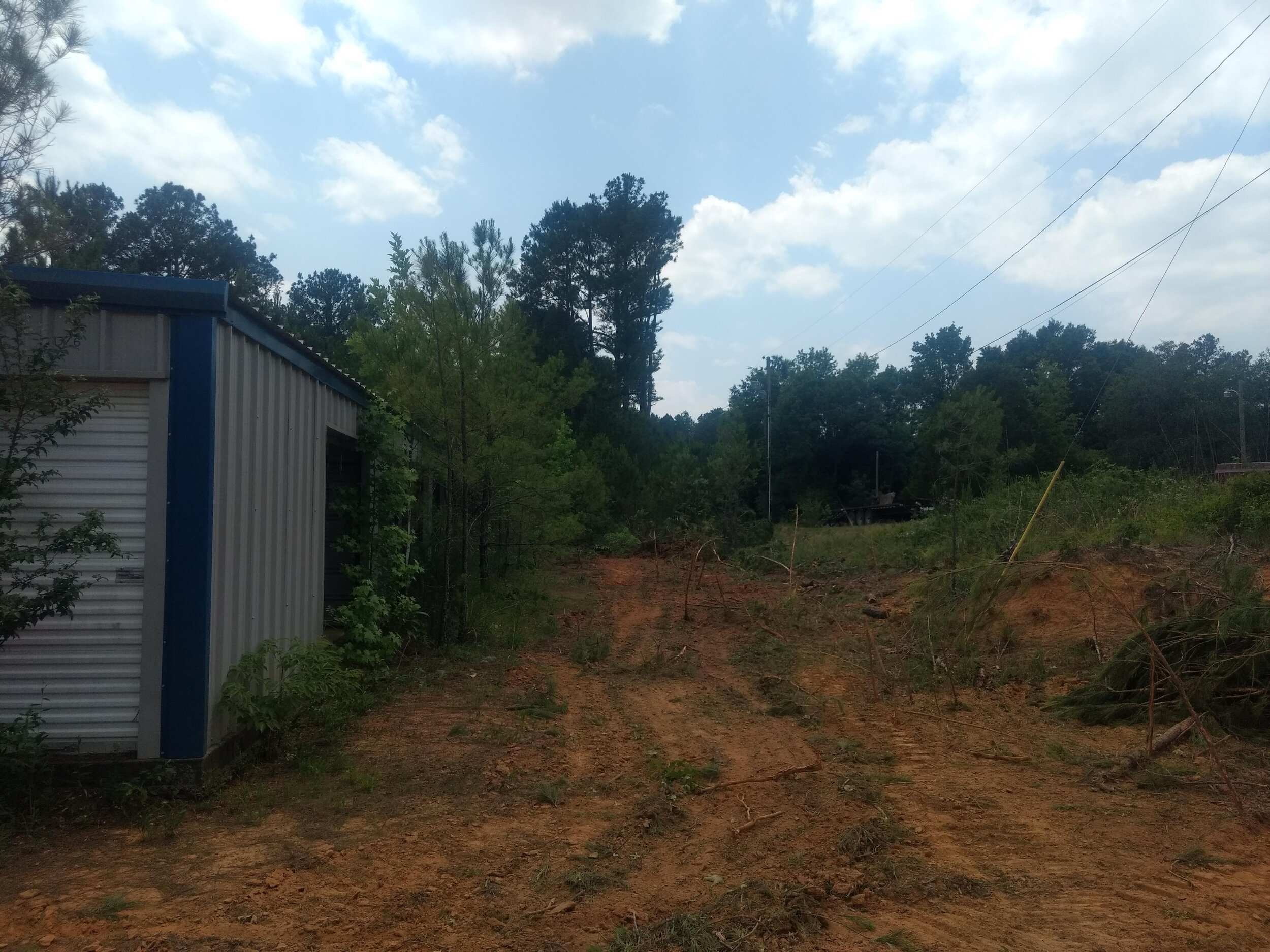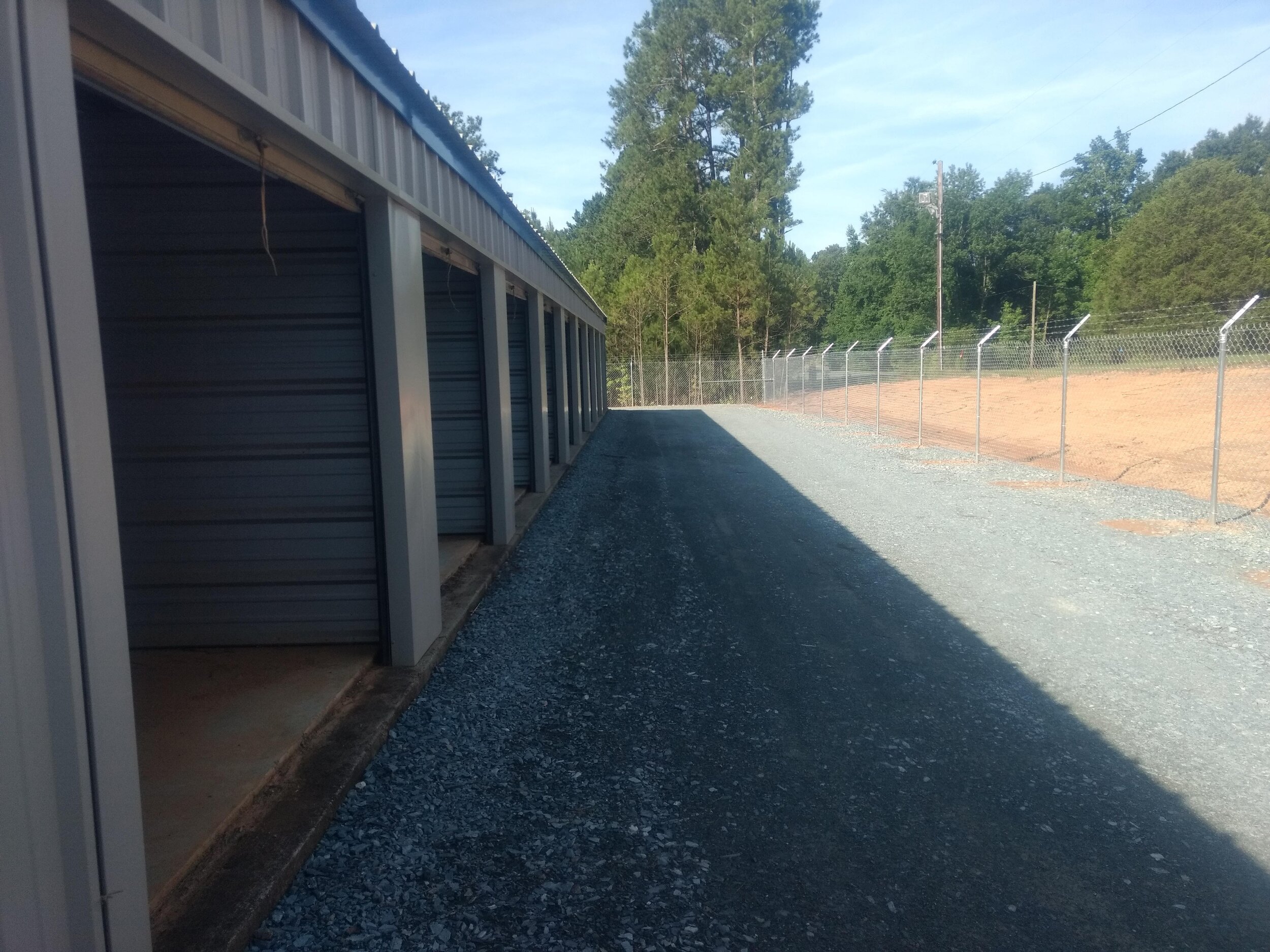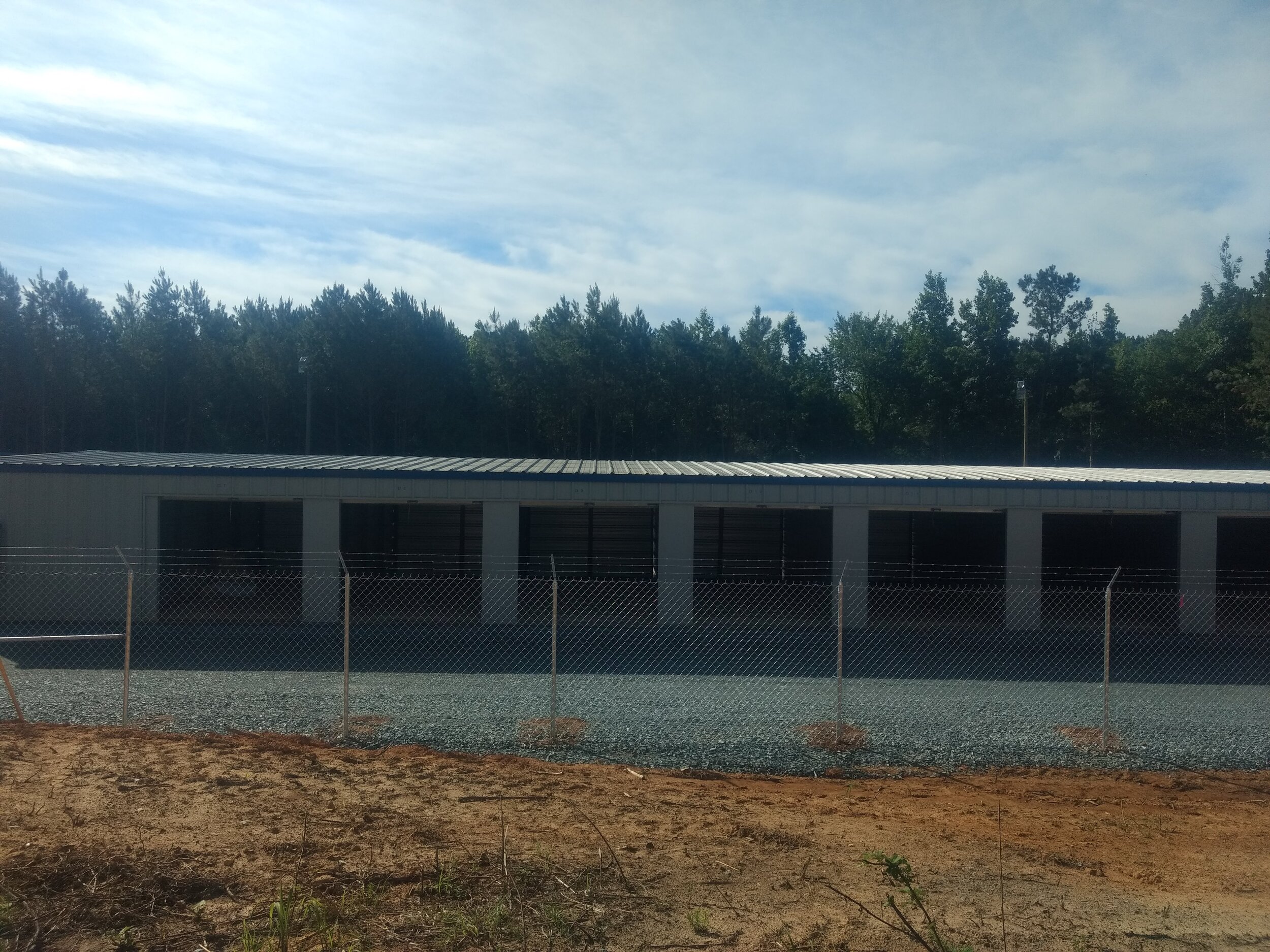Close More Deals with Seller Financing
Seller financing is a fantastic purchase option for investing in self-storage and boat and RV storage, but many buyers never incorporate it into an offer. By crafting a seller financing agreement that benefits the buyer and is presented in a way that makes sense to the buyer, this strategy will help you close more deals than any other tool in your toolbox.
As Scott Meyers, founder of Kingdom Storage Holdings and the Self Storage Investing Academy and Mastermind, explains, “One of the beauties of self-storage is because the asset class does so well, many owners are in a position when they've owned these facilities for a number of years, they've paid them off or paid them down. Therefore, the owner has a low loan basis.”
When an owner offers seller financing they may avoid or reduce the amount of capital gains taxes and depreciation recapture liability. If a seller is in a position to loan all or part of the purchase price to the buyer, they are not only going to get more for their facility because of interest payments, the loan is secured by a promissory note, a mortgage or deed of trust, and the collateral is the facility. In other words…
…The Seller Wins
Before you bring up seller financing as an option, make sure you can explain the benefits to the owner. As national self-storage investor and syndicator Fernando Angelucci of the Titan Wealth Group says, there are three solid benefits you should speak to.
“First, one way to offset the seller’s large capital gains and depreciation recapture tax in year one, is to spread that tax over a longer period of time, as opposed to taking it all in one year. By seller financing, you can set up an installment sale where you pay a portion of the principal amount year over year. Whatever portion of the principal amount you pay to the seller, they are only paying that percentage of the capital gains and the depreciation recapture tax. This is usually the first one and most important benefit that we usually relate to sellers.”
“The second benefit that we usually have good luck with is when the seller likes the idea of passive income, but doesn't want to do any more work for it,” Fernando elaborates. “The seller is usually having some type of internal conflict where he wants to sell the facility because he's frustrated with the operations, but he doesn't want to lose the passive income. That's an easy way to move them into the banker's seat by allowing them to collect interest on their property, especially if they don't need the money right now for any reason. We'll explain they don't have to do any work but they still can collect that dependable income each month.”
The third benefit to sellers is the interest income. “Again, usually sellers that want to finance don't have a huge capital need right now. When you look at the total cost of the facility, we may be buying it for $1 million but over a 10-year term on a 25-year amortization, we are actually paying $1.5 million or $1.75 million in total costs including the financing costs,” Fernando says. “Ask the seller, ‘Would you like to experience that financing income or should I just give that money to the bank?’ Then they realize it is a way to get additional revenue on top of their purchase price they would not be able to get if they were to just take the cash upfront.”
But how?
The biggest obstacle many buyers struggle with is how to present seller financing to the owner.
As Mike Wagner, founder of The Storage Rebellion, sees it, “Frequently new investors present the idea of seller financing in a way that the seller perceives it as doing the buyer a favor. Though in some instances this is true, and it can be very beneficial for the buyer, but it's also oftentimes in the best interest of the seller, but they're just not aware of the benefits.”
“Seller financing is always going to be on my radar. That’s why it's a question I'm going to pose to every seller regardless of the merits of the deal,” Mike says. “Just because I propose it to the seller doesn't mean it is the path I'll ultimately take, but I want to know in the early stages of our conversation as we're developing a relationship with the seller if this is on the table.”
Specifics, please!
According to Mike, the conversation usually goes to something to the effect of, "Hey, listen, I'm certainly interested in your property. And I will give you the best offer possible. I don't know that I will be able to make a full price offer. But one thing I do know is most of the time I can offer a little more if the seller is willing to take payments over time, rather than getting all their money up front. Is that something you'd ever consider?”
And whether they say yes or no doesn't kill the deal, Mike explains. The conversation is a preliminary way of identifying the seller’s awareness of seller financing is.
“I’m going to bring it up a couple of times, not as a hard sell, but just in conversation to make sure that the seller is making an informed decision because from a bottom-line standpoint, how much money is going to end up in the seller's pocket, as opposed to going to Uncle Sam?” Mike says. “They're far better off doing a seller financing, and usually it's misunderstanding on their part that caused them to say no a little prematurely. As the saying goes, ‘A confused mind says no.’ When you spend the time to educate the seller on the benefits of seller financing, oftentimes it's a 'no' that can be turned to a 'yes.'”
The nuances of how seller financing is presented are something experienced deal-makers have given thought to.
Fernando emphasizes asking open-ended questions such as this example. “The very first question that I love to use is, ‘Why are you selling?’ Usually, the first thing they say is something related to, ‘Oh, I need or I want the money, or I'm just tired of it.’”
“But once you start digging deeper, and if they don't give you a reason financially why they're selling, you say, ‘Okay, so we're going to buy the facility. What are you going to do with the money?’ And then they may say something like, "Oh, I'm going to pay for my grandson's college or I'm going to travel around the world."
“And I'll say, ‘You know you stand to make $1 million on this after you pay off your debts. Your grandson's college is probably going to cost you 50-grand a year. If you really need the million dollars right now, pay all the taxes on that right now. You have the income to cover all the taxes on that right now.’"
“That's usually when their ears kind of perk up and they say, ‘What are you getting at?’ I explain if the goal of selling this facility is to get your grandson through college, then why don't we structure the payments in a way that each quarter or however the college bills, we will give you a payment equal to the tuition plus some percentage on top for just a comfort, a little bit of a buffer."
“And you know the kid may only need to go to college for four years, so it's not like we're going to have that structure set up permanently. If I can use seller financing for four years and have some type of balloon in year four or five, once the kid's out of college, that could be plenty of time to raise the value on the property with little of my own money out of pocket. And once that balloon-time comes, my facility's already worth two or three times more than when I bought it for, and I could refinance it very easily and even maybe pull a bunch of cash out when I refinanced that seller.”
This is a real-life example of a deal Fernando did with a seller in Tennessee who wanted to put his grandchild through college. Tuition was billed quarterly, and Fernando set up a payment structure to pay the seller in quarterly installments.
Mike agrees that asking open ended questions carefully is key. “I know it sounds like semantics, but I don’t ask, ‘Is there any chance that you'll do seller financing?’"
“I ask, ‘Would you ever consider it?’ I don’t ask, ‘Will you do seller financing,’ or ‘Have you ever considered it?’’’
“It's easier for them to say no to those questions than it is to, ‘Would you ever consider seller financing?’ That's a broad and open-ended question and you almost come off like a jerk if you say no. And so we use that language to try to get a broad, ‘Well, maybe I'll consider it.’”
Scott starts with seller financing from the beginning of the relationship and positions seller financing as a fact. “We always ask the owner about seller financing every single time. We lead by stating that with most of the facilities that we buy, the seller is carrying back or holding a note for some portion of the sale amount, to be able to reduce their taxes,” he says.
Scott does not take no for an answer. “I'm bringing that conversation up almost right up until closing,” he says. “I’m simply asking them what they want to do about these taxes. And if they do dig into it a little bit further, if they're interested in seller financing, they'll usually want to run it past their partner, family or CPA.”
Speaking of CPA’s and People Who Aren’t In the Room
“I would always insert myself or offer to insert myself in that conversation because most of the CPAs are going to say, ‘No, you don't want to take a chance on the buyer defaulting, and you're not getting the full amount up front,’” says Scott. “It's up to us to say, ‘Well, hold on a second now, you actually get more. You can pay less taxes and you can defer them.’”
In addition, the seller has the ability to take the facility back if the buyer fails to pay. Scott points out the seller has the same protection as a bank and, should the buyer default, the seller receives the down payment, the loan payments and any value the buyer has put into the facility.
“The aim is not to get around the CPA, but to diffuse some of the reasons why they think seller financing is not in the best interest of their client,” adds Scott.
Mike uses the following approach to diffuse this objection, by telling sellers, “Listen, I'm not an accountant or a tax attorney, and I want you to verify this proposal with yours. At the same time, I'd like you to understand that many accountants and tax attorneys, if they don't have a lot of experience in seller financing, they might not be up to date on all of the various benefits.”
To further build trust, Mike looks up a resource in real time to find the most latest, up-to-date tax info by an accountant or tax attorney and sending the seller a blog post or white paper. This is particularly useful when explaining deferred taxes, saving forever taxes, and doing purchase price allocation.
What to Do When a Broker is Involved
Because a broker is paid their commission based upon the entire amount of the sale, and is usually paid in full at closing, seller financing can be a challenge.
“In some cases, a broker may be dissuading the owner from taking seller financing because they know they have to get their commission,” cautions Scott. He recommends having a discussion with the broker and the seller in advance.
Scott explains the answer to this situation is usually for the broker’s fee to come out of the down payment. “It needs to be part of the calculation because you don't want that conversation to be had when you're not in the room for it, or for it to be a surprise when they get the closing statement. The worst scenario is at the eleventh hour realizing the seller is short and not able to pay the broker.”
In that situation, the broker may raise a red flag, and the seller may pull out at the last moment. “All of those conversations need to happen very early on, with regards to the seller financing period,” he says. “When there's a broker involved, you need to discuss that head on. And if the broker is available in that conversation, you need to address it and bring up the commission before the deal gets flushed on the backend.”
Buying Time to Make a Bad Facility Good
Among the many reasons a property can’t get to a solid underwriting model might be low occupancy, lower rental rates than the rest of the market, or poor record-keeping. Whatever the case may be, if the debt service coverage ration doesn’t work and the owner still wants top dollar for the facility, seller financing may be the only option.
In order to gain time to put together a track record that is acceptable to a bank, there are different approaches the buyer may take with the seller.
“We always talk in months versus years, because it is difficult for sellers to imagine their life in 5 to 10 years,” explains Mike. “I think you're much more likely to get someone to agree to 12, 24, 36, or 48 months. I'm not looking to own a property for 10 years with the seller financing. The role that seller financing plays for me is taking a property from where it is unfinanceable by a bank, generally speaking.”
Mike recommends following one of his golden rules of thumb when negotiating seller financing: never take short-term money for a long-term project. And likewise, never take long-term money for a short-term project.
“The cost and the structures are inefficient if you don't pair them up with the duration of the project. If you don't pair up the duration of the project with the long-term versus short-term funding, you've got an inefficiency there that's going to eat into your profits. Ask me how I know!” he laughs.
For facilities with a lot of deferred maintenance, Scott advises buyers to get creative with seller financing to pay for it. “For example, we say to the seller: our interest rate is going to be low for the first year. And so it's going to be 4% for the first six months because we have to keep the cash for the new doors, website, or landscaping—whatever the case may be. And then the second year, we want you to increase the interest rate by 1% to 2%. And then in the third year, we'll be fully amortizing.”
“You can also defer payments for six months to a year,” adds Scott. “One of my students waited a year and a half before they made the first payment back to a seller on a seller carry-back note. And in some instances, our students have negotiated not only to repair credit but also that the seller actually comes with some of the cash if they do the work to be able to turn the project around.”
Scott explains some buyers have been told "no" a lot and that they have unrealistic price expectations. He recommends an educational approach to work with the buyer to get to the higher price they want by using seller financing.
Zooming in on Seller Financing
Fernando’s company makes offers on 10 to 15 properties per week all over the United States. He recommends using Zoom and video calls for efficiency as well as to negotiate.
“What I find is that 70% of what you're saying, you're not actually saying,” Fernando says. “If you can get onto a Zoom call with the seller, that's going to be your best bet because then you could see their body language. They could see your body language. And when we see other people's faces, we end up being more sympathetic towards them.”
More Negotiation Tactics
Typically, when negotiating with a seller, the buyer’s and seller’s initial offers do not match. In this example, Fernando demonstrates how to craft your presentation to get the seller to ask the buyer about seller financing.
“Say a seller wants $1 million, and I can only pay $800,000,” he says. “Sometimes I will flip it on them and kind of do it as a takeaway such as, ‘I can only pay $800,000, and I can get you a million, but we have to be a little bit more creative, but I don't think that's something that you'd be interested in hearing, right?’”
“And then I change the subject. When I do this, the seller refocuses the conversation and says, ‘Wait, wait, wait, hold on. Let's talk about it. How can you give me that million dollars?’”
Seller financing is a good deal for both buyers and sellers when structured right. There are as many ways to make a mutually beneficial seller financing deal as there are Public Storages in California, so get creative, present it carefully and grow your portfolio.
…The Buyer Wins
Among the benefits to the buyer is a faster and simpler transaction with lower fees. If a buyer is not bankable, has bad credit, or reached the maximum a bank will loan, they may use seller financing to acquire facilities.
“Obviously, the benefit to you as the buyer is that lower down payment coming into a deal or perhaps no down payment at all,” says Scott. “If a seller is in a position where they're going to carry the majority of the note and be in the place of a first lien holder like a bank would, they may carry 100%. If not, we're financing 75%, 80%, or 90% with the seller. Then we just need to come in with the equity piece. We don't have to go out and apply and qualify for a loan.”
Scott reminds buyers what happens when you are accepted and approved for a loan. “You have that loan on your balance sheets and on your credit report. Whereas with a seller-financed project, that does not show up on your balance sheet and does not show up as a liability. Therefore, it improves your ability to borrow for the next project. It frees up that amount of capital that would be on your balance sheet shown as that liability, as a debt.”
Seller Financing the Zombie Apocalypse
A dramatic example of using seller financing to buy an unbankable self-storage facility is Mike Wagner’s 12,000 square foot property in Polkton, North Carolina. After finding the property, which Mike fondly refers to as both the “Forest Property” and the “Zombie Apocalypse Facility,” on Craigslist, he offered to purchase it for $90,000 all cash, or $110,000 seller-financed.
The deal structure was $30,000 down at 6% interest on a 20-year amortization with a 10-year balloon payment. According to Mike, there were 6-inch wide, 30-foot-tall pine trees growing up against the slabs of the buildings, and walking between them was impossible due to the overgrown brush.



Mike Wagner, The Storage Rebellion
While conducting due diligence Mike found half the population he was counting on as customers were actually inmates of the local penitentiary. “So clearly my 3,600 customers now got chopped in half to 1,800, which took the deal from a no-brainer home run to an I-really-don't-know-about-this-one. I think it still has potential, but I'm not really as excited as I was.”
“I asked myself, ‘All right, well, what would need to happen for me to be excited?’ Again, maybe not as excited as I would, but excited enough to move forward with a deal. I was already buying it at $9 a square foot so the purchase price was right but of course, I had to do about $90,000 worth of repair work.” (The total project costs with negative cash flow over the time Mike owned were $206,000.)
Mike proposed the seller change the terms to six months of no interest and no payments in anticipation of the longer projected lease-up. Though this was only a couple of percentage points of the total project cost, it was enough to take the pressure off Mike while the facility was under construction.
19 months later, the property was halfway full. “We had been filling up right along with our projections, but no faster,” says Mike. “And we were presented with an offer to sell it. We ended up selling it at 19 months after we bought it for $420,000. Not a huge deal, but one of the reasons I did it was the seller financing because it was quick and easy. I didn't have to go through the rigmarole of a bank. And to be honest, I wanted to do the very dramatic before and after picture of reclaiming this property from, literally, a forest.”



Mike Wagner, The Storage Rebellion
